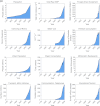The anthropocene: from global change to planetary stewardship
- PMID: 22338713
- PMCID: PMC3357752
- DOI: 10.1007/s13280-011-0185-x
The anthropocene: from global change to planetary stewardship
Abstract
Over the past century, the total material wealth of humanity has been enhanced. However, in the twenty-first century, we face scarcity in critical resources, the degradation of ecosystem services, and the erosion of the planet's capability to absorb our wastes. Equity issues remain stubbornly difficult to solve. This situation is novel in its speed, its global scale and its threat to the resilience of the Earth System. The advent of the Anthropence, the time interval in which human activities now rival global geophysical processes, suggests that we need to fundamentally alter our relationship with the planet we inhabit. Many approaches could be adopted, ranging from geoengineering solutions that purposefully manipulate parts of the Earth System to becoming active stewards of our own life support system. The Anthropocene is a reminder that the Holocene, during which complex human societies have developed, has been a stable, accommodating environment and is the only state of the Earth System that we know for sure can support contemporary society. The need to achieve effective planetary stewardship is urgent. As we go further into the Anthropocene, we risk driving the Earth System onto a trajectory toward more hostile states from which we cannot easily return.
Figures











References
-
- Arrhenius, S. 1896. On the influence of carbonic acid in the air upon the temperature of the ground. The London, Edinburgh and Dublin Philosophical Magazine and Journal of Science (fifth series) 41: 237–275.
-
- ASPO (Association of the Study of Peak Oil and Gas). 2010. www.peakoil.net.
-
- Bäckstrand K, Khan J, Kronsell A, Lövbrand E, editors. Environmental politics and deliberative democracy: Examining the promise of new modes of governance. Cheltenham: Edward Elgar; 2010.
-
- Barrett S. The incredible economics of geoengineering. Environmental & Resource Economics. 2008;39:45–54. doi: 10.1007/s10640-007-9174-8. - DOI
Publication types
MeSH terms
LinkOut - more resources
Full Text Sources
Research Materials
Miscellaneous

